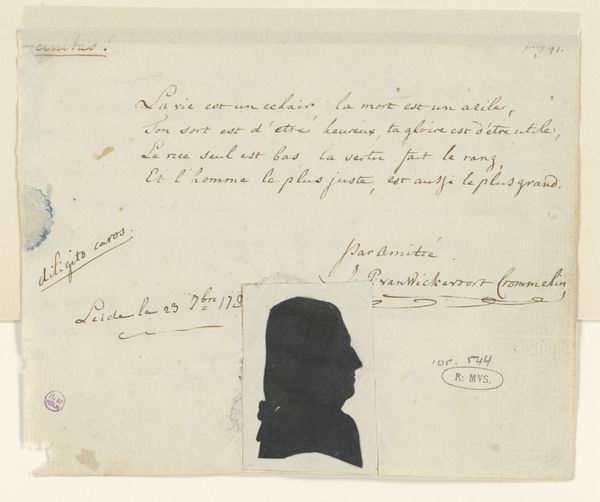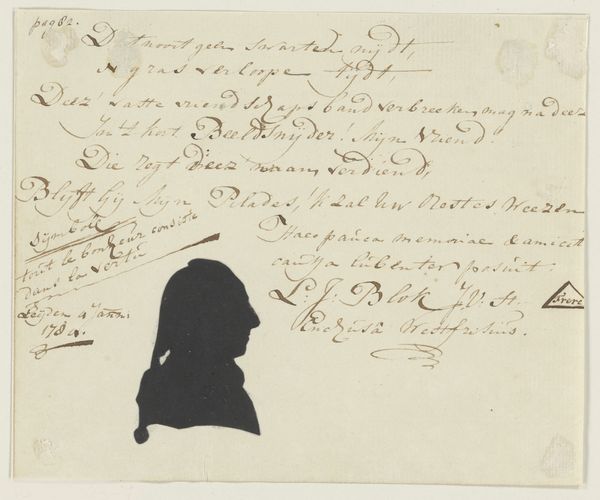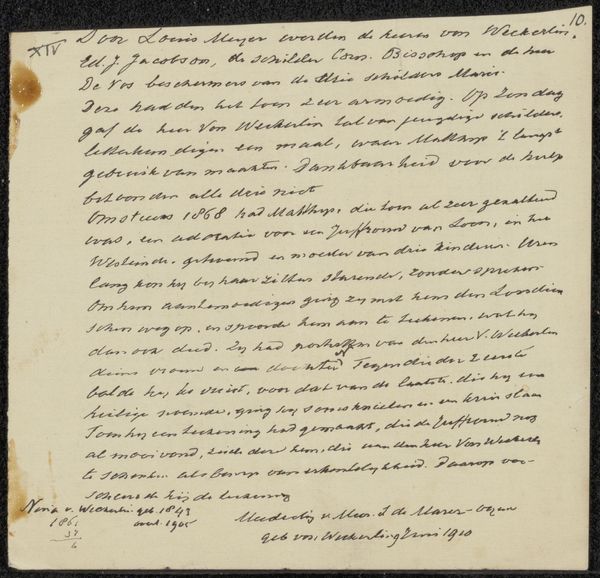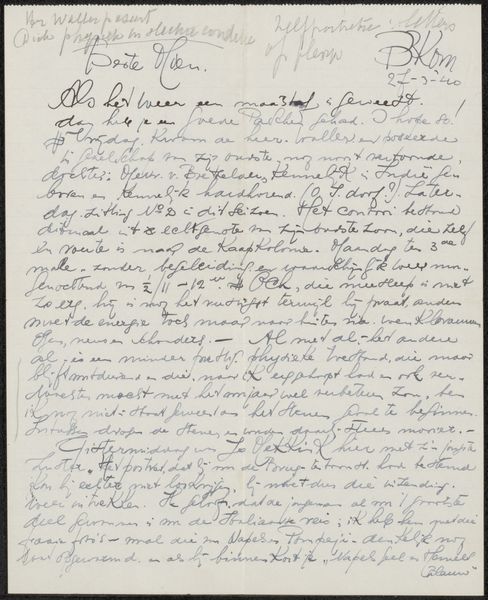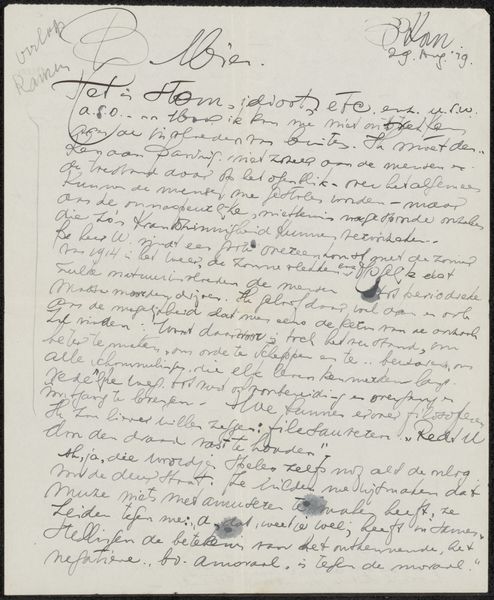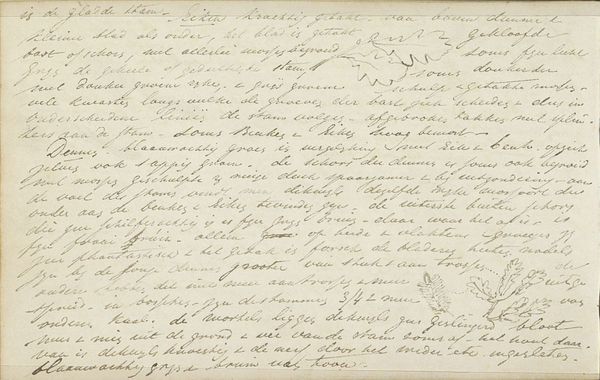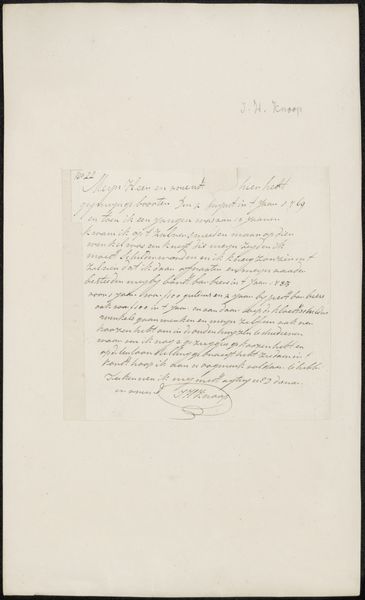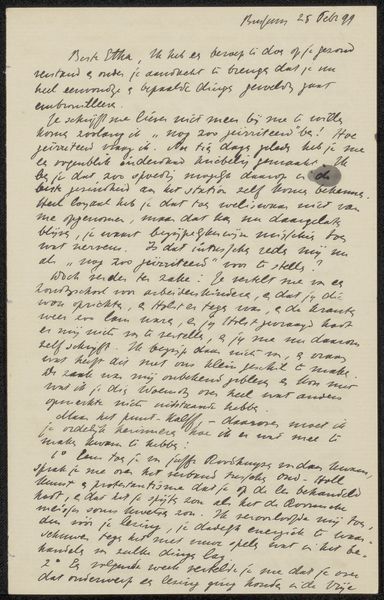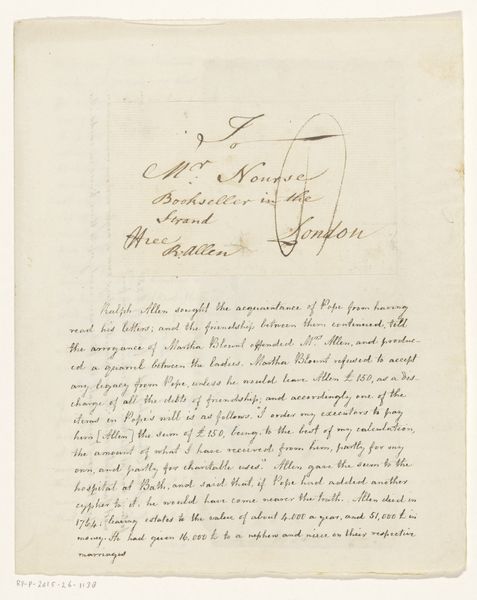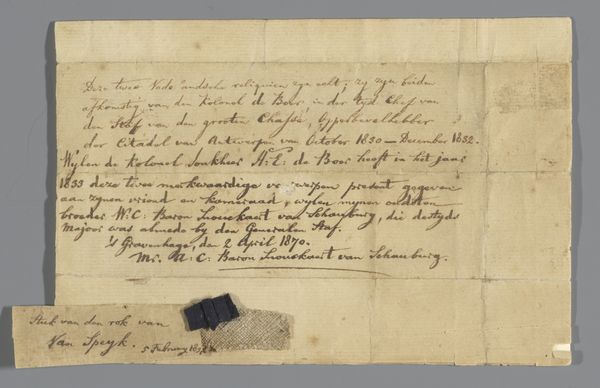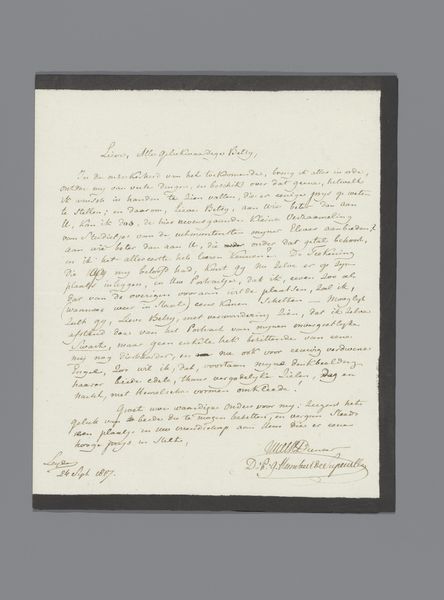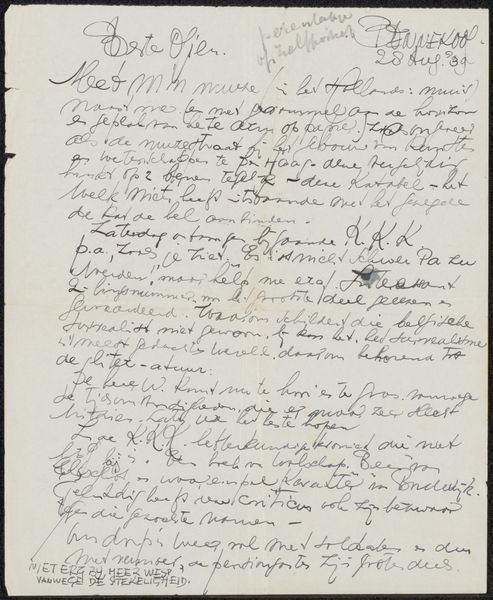
drawing, paper, ink
#
portrait
#
drawing
#
neoclassicism
#
figuration
#
paper
#
ink
#
monochrome
Dimensions: height 137 mm, width 172 mm
Copyright: Rijks Museum: Open Domain
Curator: What a striking silhouette. The sharp, clean lines create an almost ethereal effect. Editor: Indeed. What we’re looking at is a monochrome portrait, specifically a silhouette of Nicolaas Bucaille. Although the piece is listed as being created anonymously, its medium consists of ink on paper dating back to the late 18th century, somewhere between 1783 and 1799. Curator: Silhouettes such as these served as affordable mementos in a time before photography was widespread, embodying an interesting tension between presence and absence. Their minimalist rendering prompts a powerful form of imaginative projection. Editor: I’m fascinated by the politics embedded in what might seem a simple likeness. Silhouettes gained popularity amongst the burgeoning middle class during the Enlightenment, acting as a democratizing force in portraiture that challenged the exclusivity of painted portraits commissioned by the aristocracy. Curator: It’s more than just affordability; the silhouette strips away extraneous detail, emphasizing form and essence. It reflects a Neoclassical pursuit of idealization, reminiscent of cameos, invoking an eternal and timeless quality that elevates the subject. Look, also, at the additional inscriptions that adorn the surface - these contextual markings give clues to its meaning. Editor: It's true, while this mode of portraiture aimed for timelessness, its cultural interpretations varied considerably, ranging from markers of social class to signifiers of the sitter's professional status. As for those additional notations, they certainly speak to that culture. I see textual annotations surrounding the figure, most likely acting as inscriptions of affection, notes about its creation, and other contextual markers to deepen our understanding. Curator: These handwritten phrases are intriguing. I'd bet their placement wasn’t arbitrary; like runes or sacred inscriptions, the very act of writing infuses an intention, a certain form of emotional connection that binds the portrait with memory, ensuring its lasting presence in the mind of the viewer. Editor: Exactly. These markings capture the socio-cultural forces that determined whose likeness was worth preserving and how that act connected to prevailing ideas around memory, identity, and societal roles. This wasn't merely about artistic representation, but constructing and negotiating status in a revolutionary era. Curator: Exploring these layers reveals so much more than a shadow outline! Editor: Absolutely, a glimpse into a fascinating period of transition through what appears, at first glance, to be an utterly unassuming artifact.
Comments
No comments
Be the first to comment and join the conversation on the ultimate creative platform.

